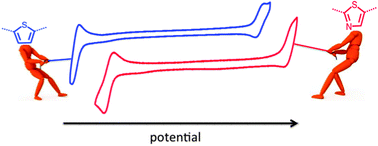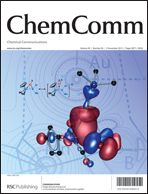Thiazole as a weak electron-donor unit to lower the frontier orbital energy levels of donor–acceptor alternating conjugated materials†
Abstract
We demonstrate that the substitution of the thiophene by the thiazole heterocyclic compound as a weak electron-donor unit, in donor–acceptor alternating conjugated materials, allows a simultaneous downshift of both HOMO and LUMO levels while keeping the energy bandgap almost unchanged.


 Please wait while we load your content...
Please wait while we load your content...